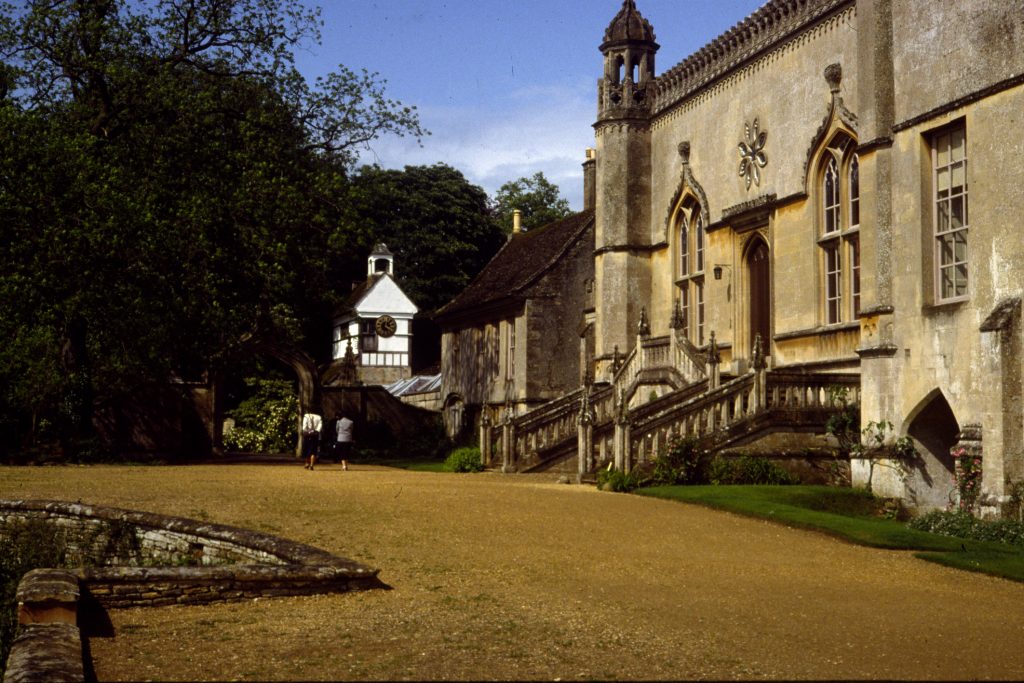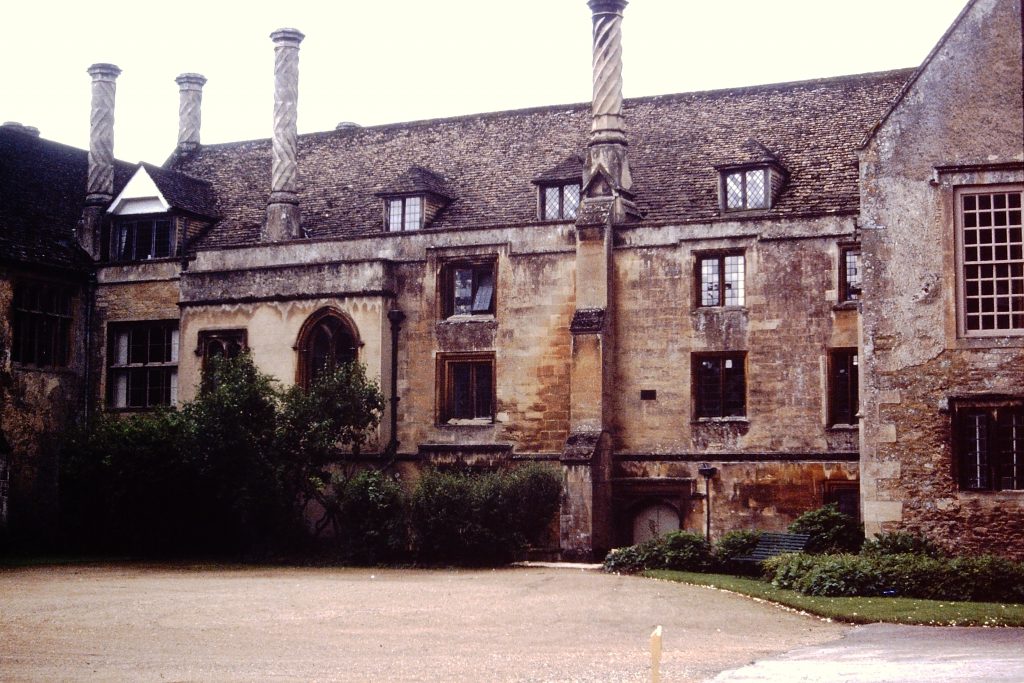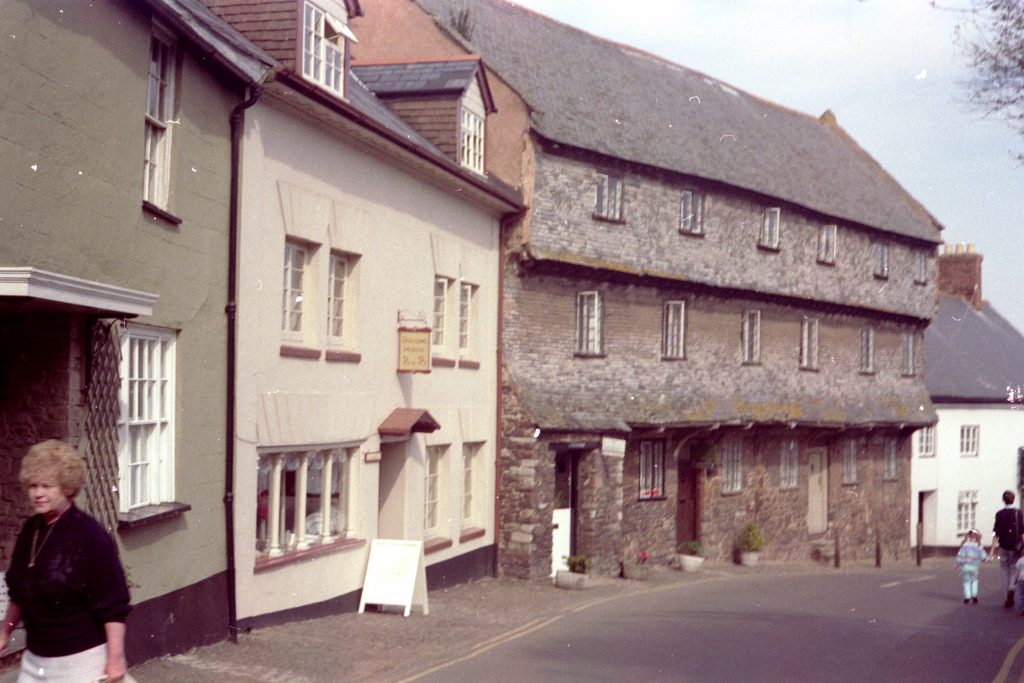In this blog, I am continuing to discuss important roles of the medieval church as found in my West Country Medieval Mystery Series featuring my heroine, the Lady Apollonia of Aust. I began presenting the medieval church with cathedrals, then focused this spring on Glastonbury and Cirencester Abbeys. This month I would like to shift to other abbeys and priories and their services to travelers that are part of my stories. All the monasteries of England were destroyed after King Henry VIII’ s Dissolution of them in the 16th century. The pictures in this posting give some idea of what few buildings and ruins have survived that event.
Let us begin by looking at monastic houses that were in my first story, Effigy of the Cloven Hoof. These are Lacock Abbey, Kingswood Abbey, Stogorsey Priory, and Dunster Priory. Lady Apollonia encounters Lacock Abbey in Wiltshire as a young teenager after the unexpected death of her first husband. She finds her visit there to be very helpful to her in overcoming the trauma of that event.
Lacock Abbey survives to the present day because it was sold to Sir William Sharington at the time of the Dissolution of the Monasteries. Before that, the abbey was a nunnery, founded in 1229 by Ela, the widow of an illegitimate son of King Henry II. Sharingon added to the original buildings in creating his residence, which has been improved over the years, to what exists today. A picture of the main entrance is shown above. Other buildings of the nunnery still exist, such as the brew house which appears in the background of this picture. The courtyard of the house is shown below.
Lady Apollonia’s contact with Lacock Abbey occurred early in her life. The other three monasteries mentioned at the beginning of this posting are part of the mystery story in Effigy of the Cloven Hoof. Kingswood Abbey appears early in the plot as the place where the remains of a victim are taken after being discovered near Aust. The abbot was eager to have the body of the deceased because the abbey had earlier turned down an opportunity to house the body of King Edward II which became a great pilgrimage site in nearby Gloucester Abbey.
 Kingswood was a Cistercian abbey, less than 20 miles east of Aust, founded in 1139 by William of Berkeley. After the Dissolution of the Monasteries, little was left of its original buildings. The gatehouse, appearing in the picture on the left, was built after my story was set, and is the only remnant remaining.
Kingswood was a Cistercian abbey, less than 20 miles east of Aust, founded in 1139 by William of Berkeley. After the Dissolution of the Monasteries, little was left of its original buildings. The gatehouse, appearing in the picture on the left, was built after my story was set, and is the only remnant remaining.
Two priories are places where Lady Apollonia stayed when journeying from Aust to the fictitious village of Cliffbarton in Somerset and back. On this journey, she stayed with her middle son, Thomas, in Axbridge, Somerset, one day’s ride on horseback from Aust. Stogursey Priory was a day’s ride from Axbridge. Located near Bridgewater, Stogursey was a Benedictine Priory founded around 1100. The picture shown on the right, courtesy of Robert Cutts, is of the interior of the Stogursey Priory Church.
The next stop for Lady Apollonia, going to and coming from Cliffbarton, was at Dunster Priory. Its one remaining building is shown below. This Benedictine priory was established around 1100 as a cell of Bath Abbey. It is worth noting that, on the nights when Lady Apollonia did not stay with family, monastic houses along her route would have provided accommodation for the travelers. Medieval travel was frequently based upon personal contacts and connections. There were inns and hostels in communities but not the abundance of motels and various accommodations available on our modern highways.
Next month I will move on to discuss monastic houses in other books in my series.


